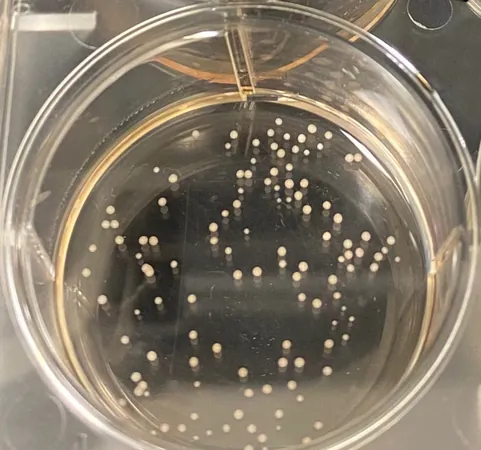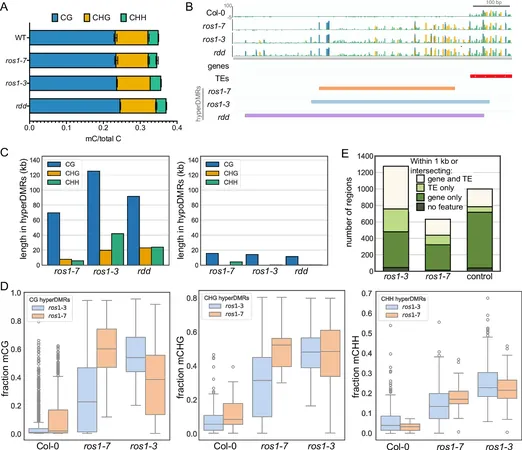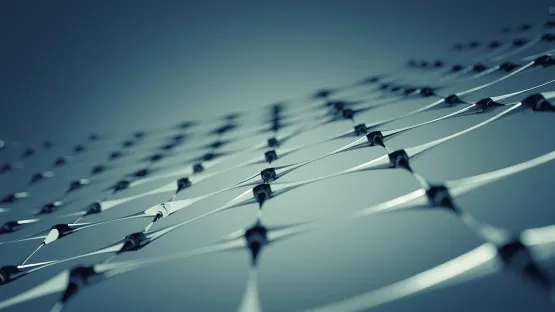
Revolutionary Brain Organoids Uncover Secrets of Schizophrenia and Bipolar Disorder
2025-09-22
Author: Siti
Lab-Grown Mini Brains Reveal Breakthrough Insights
In a groundbreaking development, scientists have created pea-sized brain organoids that illuminate how neurons may misfire due to schizophrenia and bipolar disorder. These mental health conditions impact millions globally and remain notoriously difficult to diagnose due to the elusive nature of their molecular underpinnings.
Toward Precision Diagnosis and Treatment
The remarkable findings, published in APL Bioengineering, represent a significant leap forward. Lead researcher Annie Kathuria, a biomedical engineer from Johns Hopkins University, emphasizes the challenge in diagnosing these disorders. Unlike Parkinson's disease, where specific enzymes can be measured, schizophrenia and bipolar disorder lack such clear biomarkers. Kathuria envisions a future where brain organoids not only confirm diagnoses but also allow for tailored drug testing—potentially transforming how mental health issues are treated.
Engineering the Future of Mental Health Research
Kathuria's team generated these organoids by reprogramming blood and skin cells from patients with schizophrenia, bipolar disorder, and healthy controls into stem cells. These stem cells can then create various brain tissue types. Utilizing advanced machine learning algorithms, researchers classified the electrical activity of these mini-brains, distinguishing between healthy and unhealthy neural firing patterns.
Promising Accuracy in Distinguishing Disorders
The unique brain-like activity patterns in the organoids provided biomarkers for schizophrenia and bipolar disorder, achieving an impressive 83% accuracy in identifying patients. When exposed to gentle electrical stimuli, accuracy increased to 92%, unveiling more about the neuroelectric signals essential for brain functioning.
Unraveling the Electrical Signatures of Mental Disorders
The study revealed complex electrophysiological behaviors distinct to schizophrenic and bipolar patients, highlighting neural firing spikes and simultaneous alterations across various parameters. Kathuria explained that these findings allow for a clearer understanding of what goes awry at a molecular level in these brain organoids, differentiating them from healthy counterparts.
Innovative Neurotechnology Offers New Insights
To observe how the organoid cells interact, researchers placed them on microchips equipped with multi-electrode arrays, mimicking an electroencephalogram (EEG) setup. This innovative approach simulated data collection akin to monitoring actual brain activity.
A Small Step Toward Major Clinical Impacts
Though the research initially involved only 12 patients, Kathuria is optimistic about the potential clinical applications. Collaborating with professionals from the Johns Hopkins School of Medicine, the team is gathering blood samples to further test how different drug concentrations can influence these findings. Kathuria explains that this could drastically reduce the current trial-and-error method often employed in prescribing psychiatric medications.
A Hope for Faster Solutions in Mental Health Treatment
Currently, patients often wait months to find effective medication, with clozapine being a common prescription. However, roughly 40% of patients resist this treatment. With advancements from organoid studies, the hope is to expedite the process, allowing for quicker and more effective solutions to help those afflicted with schizophrenia and bipolar disorder.





 Brasil (PT)
Brasil (PT)
 Canada (EN)
Canada (EN)
 Chile (ES)
Chile (ES)
 Česko (CS)
Česko (CS)
 대한민국 (KO)
대한민국 (KO)
 España (ES)
España (ES)
 France (FR)
France (FR)
 Hong Kong (EN)
Hong Kong (EN)
 Italia (IT)
Italia (IT)
 日本 (JA)
日本 (JA)
 Magyarország (HU)
Magyarország (HU)
 Norge (NO)
Norge (NO)
 Polska (PL)
Polska (PL)
 Schweiz (DE)
Schweiz (DE)
 Singapore (EN)
Singapore (EN)
 Sverige (SV)
Sverige (SV)
 Suomi (FI)
Suomi (FI)
 Türkiye (TR)
Türkiye (TR)
 الإمارات العربية المتحدة (AR)
الإمارات العربية المتحدة (AR)